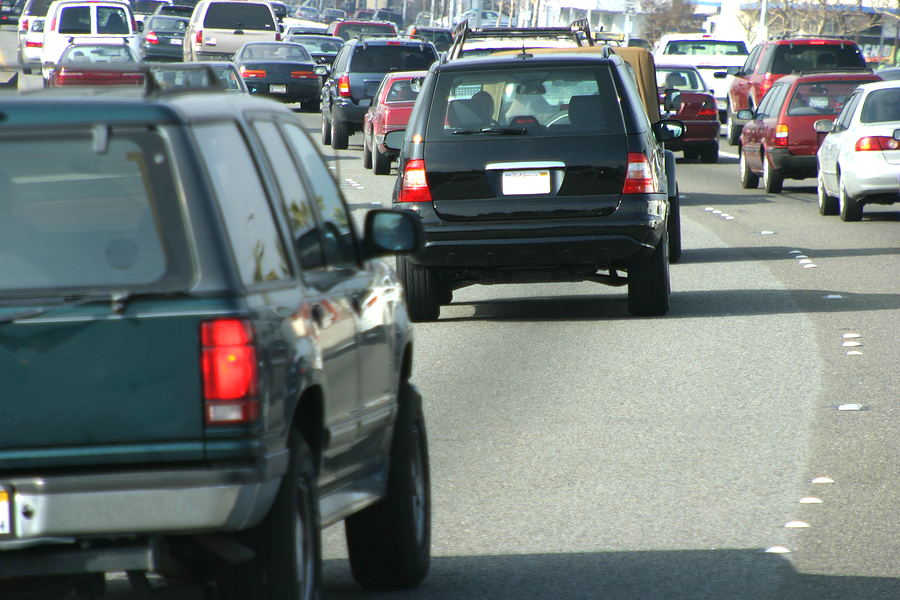The majority of Americans consider themselves to be good drivers but their habits on the road tell a different story.
American drivers believe their own driving knowledge, ability and safe driving habits are well above other drivers on the road, according to a recent study by Allstate Corp.
Nearly two-thirds, 64 percent, of American drivers rate themselves as “excellent” or “very good” drivers. American drivers’ positive self-rating is more than twice as high as the rating they give to their own close friends — 29 percent “excellent” or “very good” — and also other people their age, 22 percent.
Drivers also don’t think much of the driving ability of people from surrounding states. Fifty-three percent rate them as “average” or “poor,” while just 8 percent rate those drivers as “excellent” or “very good.”
Others who American drivers rated lower than themselves include:
- Teenage drivers received the lowest rating; 81 percent rated teenagers as “average” or “poor” drivers.
- 70 percent of Americans gave senior citizen drivers comparatively low scores.
- Parents with very young children in the car received a mediocre rating, with 26 percent of American drivers rating this group as “excellent” or “good,” while 33 percent rate them as “average” or “poor.”
- Even those with their own very young children are critical of their peers and rate themselves more than twice as high as “excellent” or “good” drivers — 64 percent — than they rate their fellow parents — 29 percent.
- Men are more likely to rate themselves as “excellent” than women (36 percent versus 26 percent), as are college-educated drivers (35 percent) compared to those with no degree (28 percent).
- Republicans also rate themselves higher (70 percent) than Democrats (61 percent) or Independents (61 percent).
Despite American drivers’ confidence in their abilities, many admit to practicing dangerous behaviors on the road.
- Eighty-nine percent say they’ve driven faster than the posted speed limit, and 40 percent say they’ve driven more than 20 miles per hour over the limit.
- Men are more likely to speed than women — 48 percent versus 30 percent.
- Almost half (45 percent) say they have driven while excessively tired — to the point of almost falling asleep.
- Fifteen percent say they have driven while intoxicated, with men almost four times more likely than women to have done so — 23 percent of men versus six percent of women.
- More than one-third (34 percent) have sent a text-message or email while driving, but the prevalence of the practice changes by age group.
- Those 18-29 years of age are the most likely to text while driving (63 percent) with drivers ages 30-44 not far behind (58 percent).
- Texting while driving decreases with older age groups; only 25 percent of those 45-54, six percent of those 55-64, and two percent of those over 65 admit to the practice.
Most American drivers have caused some dangerous situations for others while driving.
- Seven in 10 American drivers say that as a result of being distracted while driving, they have slammed their brakes or swerved to avoid an accident, missed a traffic signal, or actually caused an accident.
- Fifty-three percent report having received a speeding ticket or other moving violation. Among these drivers, 44 percent say they have received three or more. More men say they have received a ticket than women — 61 percent vs. 46 percent — and those who have received tickets get more of them — an average of 4.3 per man compared to 2.6 per woman.
- Fifty-six percent of American drivers say they have been involved in an accident, but only 28 percent of them say the accident was their own fault.
Regardless of confidence or high self-ratings, a significant number of American drivers experience concern about certain driving situations.
- Two-thirds (64 percent) of American drivers say that driving in the snow, heavy rain or other bad weather is stressful and uncomfortable.
- Fifty-six percent report the same about driving in heavy traffic, and 41 percent say that driving behind or near large trucks is stressful and uncomfortable.
- Driving at night (29 percent stressful and uncomfortable), driving over a long bridge (17 percent), driving through a tunnel (13 percent), and driving on the highway (16 percent) rate lower on the stress scale.
The survey of 1,000 American adults was conducted July 13, 14, 16 and 17 via landline and cell phone and has a margin of error of +/- 3.1 percent. Of the 1,000 adults, the survey identified 848 drivers who hold a license and drive at least occasionally. The survey was conducted by Financial Dynamics (FD) for Allstate.
Topics Trends Personal Auto
Was this article valuable?
Here are more articles you may enjoy.



 Former MLB Player, 3 Others Charged with Staging Auto Accident in Miami
Former MLB Player, 3 Others Charged with Staging Auto Accident in Miami  Harvard Study Again Stirs the Pot on Demotech Ratings of Florida Carriers
Harvard Study Again Stirs the Pot on Demotech Ratings of Florida Carriers  USAA to Lay Off 220 Employees
USAA to Lay Off 220 Employees  JPMorgan Client Who Lost $50 Million Fortune Faces Court Setback
JPMorgan Client Who Lost $50 Million Fortune Faces Court Setback 

